 All Entries in the "Research/Study" Category
All Entries in the "Research/Study" Category
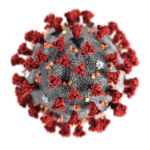
Academic Study Examines the Gender Gap in Mask Wearing During the Early Days of the Pandemic
A new study led by researchers at New Mexico State University and Ball State University in Muncie, Indiana, finds that women have been more conscientious than men in taking measures to combat the spread of the COVID-19 virus.

How Well Do the Nation’s Women’s Colleges Succeed in Graduating Their Students?
Nationwide, at large colleges and universities, about 70 percent of all women who enter college graduate within six years from the same institution at which they initially enrolled. At many women’s colleges, students do even better. At Barnard College, Wellesley College, and Scripps College, the graduation rate is over 90 percent.
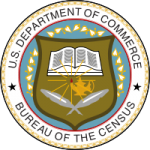
The Gender Gap in Educational Attainment Among Household Heads
New data from the U.S. Census Bureau shows that for households headed by a single man, 22.7 percent of the householders were college graduates. For households headed by a single woman, 25.1 percent of the householders were college educated. Some 44 percent of married-couple families had a college-educated householder.

The Impact of Education and Gender on Tobacco Use by American Adults
In 2019, only 15.7 percent of adult women used tobacco products compared to 26.2 percent of men. Some 12.7 percent of women smoked cigarettes compared to 15.3 percent of men. Men were more than 15 times as likely as women to use smokeless tobacco products.

Which Sports Do the Best in Graduating Their Women Student Athletes?
The highest graduation rate for women’s sports was for fencing, where 87 percent of women athletes earned their degree. The graduation rates for women athletes in gymnastics, ice hockey, rowing, lacrosse, skiing, swimming, and water polo were over 80 percent.

Survey Finds Women Are Making Progress in Enrollments at High-Ranking Business Schools
The website Poets & Quants recently released its survey of women at the nation’s highest-ranked business schools. it found that that women made up 49 percent of the students in the entering class at the Tuck School of Business at Dartmouth College in Hanover, New Hampshire. This was the largest percentage of women among the top business schools.

University of Illinois Study Finds Rise in Non-Virus-Related Death Rates for Women in Early Months of the Pandemic
The authors found that death rates for 17 of 18 cohorts of age and gender groups were higher than was the case in the same months of 2019. The only age and gender group that showed a decline in death rates was for girls ages 5 to 14.

The Nationwide Gender Gap in College Graduation Rates
For all students who enrolled in bachelor’s degree programs at NCAA Division I institutions in 2013, 67 percent earned their degrees by 2019. When we break the figures down by gender, we see that 70 percent of women earned their degrees within six years compared to 64 percent of men.

Study Claims That Early-Career Women Scientists May Do Better If They Have a Male Mentor
A study published on the website of the journal Nature Communications by researchers at the Abu Dhabi campus of New York University concluded that “opposite-gender mentorship may actually increase the impact of women who pursue a scientific career.” The paper has created a firestorm in academic circles.

Examining the Gender Gap in Credits Earned in High School Career and Technical Education
In 1992, there was a 0.64 credit advantage for male students compared to women students in CTE courses in business fields. By 2013, women had erased this deficit and held a slight advantage over men in CTE business credits earned.

Does Funding for State Universities in Oregon Have a Gender Bias?
A new study led by Jacqueline Strenio, an assistant professor of economics at Southern Oregon University in Ashland, finds that public funding of state universities in Oregon favors academic programs and universities with higher percentages of men.

New Study Aims to Determine How to Boost the Number of Women Academics in Management Information Systems
The researchers will collect data identifying barriers to women’s advancement in academic careers in management information systems, including promotions and tenure. They will also craft policies to recognize women’s contributions to the field of information systems and conduct training on recognizing gender bias in the discipline.

University of Massachusetts Study Finds Most Women Are Not Receiving Proper Postpartum Care
According to a study led by researchers at the University of Massachusetts Amherst, most women are receiving fewer than half the services recommended during their comprehensive postpartum medical checkup. In one of the most startling findings, despite an increased awareness of perinatal depression, only one in 11 patients received a screening for depression.

American Association of University Women Assesses Impact of COVID-19 on Women’s Economic Security
A new study by the American Association of University Women shows that the COVID-19 pandemic has impacted the economic security of women by a far higher degree than for men. This is especially true for women of color.

Study Finds Gender Bias in Evaluations of Graduate Teaching Assistants
A group of ecology students at the Univerity of Florida participated in an online class where they could not hear the voice of their teaching assistant. Half were shown a picture of a male teaching assistant, the other half were shown a pciture of female. in fact, the teaching assistant for all was a woman. Post-course evaluations showed a gender bias.

New Report Examines the Gender Gap in College Graduation Rates
For all students who enrolled in 2013, 62.3 percent of women earned a degree within six years. For all men who entered four-year colleges in 2013, only 56.2 percent had earned a degree by 2019.

The Gender Gap in Scholarly Productivity During the Pandemic May Have Long-Term Consequences
The research indicates that “the exceptional lock-down and social distancing measures imposed by the pandemic have penalized women academics and benefited men. Women at later stages of their careers were penalized the most, which in principle could be explained by more intense family duties.
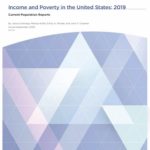
The Persisting Gender Gap in Poverty Rates in the United States
For families headed by a single man, 11.5 percent of all families were poor. But for families headed by a single woman, 22.2 percent of all families were poor. The gender gap in poverty rates produces a major disadvantage in access to higher education for women, a path that might provide them a way out of poverty.

How the Legal Status of Women Impacts Gender Economic Equality
The study of data from the World Bank provides the first global picture of how discriminatory laws continue to restrict women’s economic opportunities. It documents large and persistent legal gender inequalities, particularly with regards to equal pay and parenting.
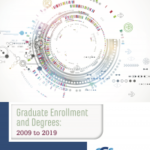
Master’s Degrees Awarded in Many Disciplines Are Heavily Segregated by Gender
Women were 76.7 percent of all individuals who were awarded master’s degrees in educational fields and nearly 80 percent of all master’s degree recipients in health science fields. In contrast, women received only 27.3 percent of all master’s degrees in engineering and were just over a third of all recipients in mathematics and computer sciences.

New Census Data Shows a Major Gender Gap in Median Income and Earnings in the United States
In 2018, the median income level for family households headed by a single woman was 69.4 percent of the median income for family households headed by a single man and 47.0 percent of the median income of married-couple families. Both of these income gaps widened from the previous year in 2018.

Women Narrow the Gender Gap in Scores on the SAT College Entrance Examination
On the combined reading and mathematics sections of the SAT College Entrance Examination for students in the high school Class of 2020, men had a mean score of 1055 and women had a mean score of 1048. A year ago the overall gender gap in favor of men was 13 points. This year it was seven.
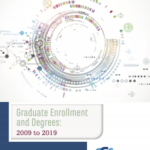
A Snapshot of Women Enrollments in Graduate Schools in the United States
In 2019, women made up less than 39 percent of all graduate student enrollments in engineering, mathematics and computer science, and physical sciences. Women were more than 75 percent of all graduate students in education, the health sciences, and public administration.

Women Are More Likely to Apply to College and More Likely to Be Accepted for Admission Than Men
New data from the U.S. Department of Education allows us to calculate that at degree-granting institutions that do not have open admissions, the acceptance rate for women in 2019 was 58.5 percent. For men, the overall acceptance rate at these schools was 54.5 percent.

Gender Differences in Test Scores on the ACT College Entrance Examination
Some 27 percent of men who took the ACT test were deemed college-ready in all four areas of English, mathematics, reading, and science. For women, 25 percent of all test takers were deemed college-ready in all four areas.

How Interactions Between Teachers and Other Students Impact Girls’ Identity as Scientists
Researchers looked at when and how the girls were recognized for their coding successes during a summer coding camp, and how teachers and peers responded when the girls demonstrated coding skills. The authors noted that even in a camp explicitly designed to bolster girls in the sciences, prevailing stereotypes can undermine best intentions.

Women’s Political Leanings Impact Their Responses to Sexual Harassment and Misconduct
A new study by Alexa Bankert, an assistant professor of political science at the University of Georgia, found that liberal women – when experiencing discrimination – turn toward direct political action like volunteering for a campaign, while conservative women do not show a similar increase in their political engagement.

University Study Finds That Women Are Often Overmedicated and Suffer More Adverse Side Effects
A new study by University of Chicago and University of California, Berkeley researchers suggests that women are being widely overmedicated because drug dosages are calculated based on studies done overwhelmingly on male subjects.

Examining the Gender Pay Gap Among Primary Care Physicians
Female primary care physicians earn less revenue than men for the care they provide, but spend more time with patients than their male colleagues, dispelling the commonly held opinion that female physicians work fewer hours than men.

Study Examines Gender Differences in Hazing Among High School Students
In focus group meetings among students at two high schools, researchers found gendered perceptions and themes of power and status around issues of hazing and prevention. The researchers chalked up perceived differences in hazing behaviors between genders to issues of identity and personality.
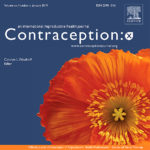
Duke University-Led Study Finds Major Lack of Knowledge on Abortion Laws and Regulations
In a national survey, the mean score for women participants was just over two correct answers out of 12 on the laws governing abortion in their state. Poverty, low levels of education, or low health literacy did not appear to be factors affecting knowledge of state abortion laws.

Study Finds No Gender Gap in Computing Skills but a Persisting Gender Gap in Confidence in Those Skills
The results showed that the gender gap in performance is minimal in accuracy with no differences in time spent, while the gap in confidence in computer skills has remained. Women were less confident than men of their answers in all scenarios.

Where Do Women’s Colleges Stand in This Year’s U.S. News Rankings?
Several women’s colleges are included in the rankings of the top 35 best liberal arts colleges in the nation, according to the magazine U.S. News and World Report. Wellesley College in Massachusetts was ranked in a tie for fourth overall. This was the highest rating for a women’s college in this year’s survey.

Emory University Scholar Finds That Women Who Suffer Cardiogenic Shock Get Less Aggressive Treatment Than Men
Investigators found that women were significantly less likely than men to receive coronary angiography, a procedure that uses a special dye and X-rays to detect blockages in heart arteries, to be treated with stents or balloons to open blockages in the arteries, and to have their heart function temporarily supplemented using a mechanical pump.

Women Are More Prominent in “Open Science” Than the Traditional “Reproducibility” Movement
The open science movement calls on scientists to share resources so that future research can build on what has been done, ask new questions and advance science. A new study finds that open science promotes greater equity, diversity, and inclusivity than the traditional scientific method.








